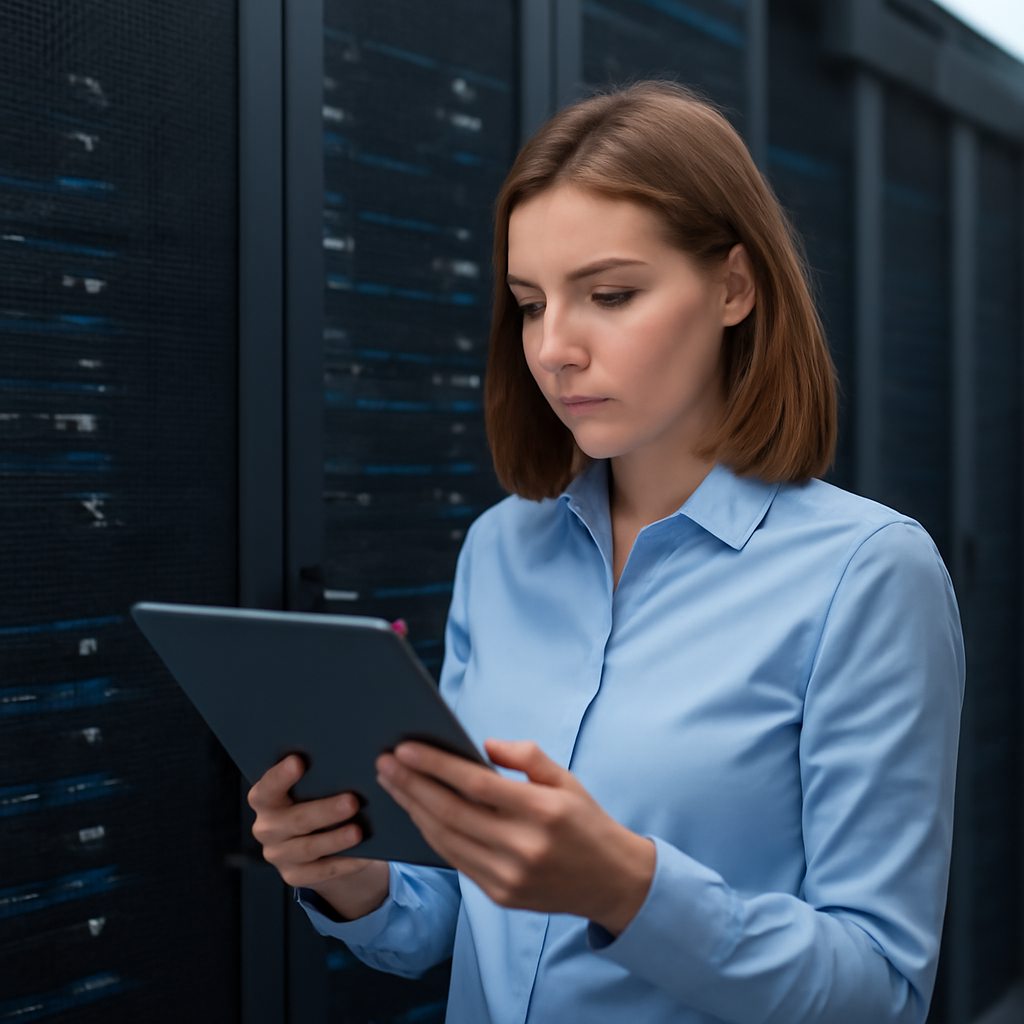Local hosting is no longer a niche choice; it is the practical way to win on speed, trust, and visibility in 2025. If your customers are nearby, why send their clicks on a cross-country road trip before your pages load? When your servers sit closer to your audience, you cut latency, reduce Time To First Byte [Time To First Byte (TTFB)], and give your site a snappier, premium feel. I still remember consulting for a neighborhood bakery whose site felt like waiting in line on a rainy Saturday—after moving them to local hosting, checkouts were smoother, mobile pages popped, and online orders jumped within weeks.

Beyond gut feel, local hosting unlocks measurable advantages. Faster pages feed better Search Engine Optimization [Search Engine Optimization (SEO)], which nudges your brand higher in search results and lowers your ad costs. Keeping data within your region also supports compliance with regulations like General Data Protection Regulation [General Data Protection Regulation (GDPR)] and California Consumer Privacy Act [California Consumer Privacy Act (CCPA)], which builds customer confidence. And when you combine proximity with managed, secure hosting from a partner like iHosting Web, LLC, you do not just move servers—you level up performance, reliability, and the entire customer experience across your web design, branding, and eCommerce stack.
Local Hosting in 2025: What It Is and Why It Matters
At its core, local hosting means your website and applications run on servers physically near your primary audience. That closeness trims network hops, improving response time and stability, especially during peak traffic. Think of it like opening a storefront in the neighborhood instead of across town—customers find you faster, and visits feel easier. On modern stacks, this proximity pairs beautifully with regional caching and optimized asset delivery, serving static assets near users and routing dynamic content to nearby compute for a more responsive experience.
Performance is only half the story. Many businesses need data residency assurances because their customers, payment processors, or industry rules demand it. Hosting locally supports data sovereignty requirements while simplifying audits, contracts, and the clear security and support terms you share with stakeholders. It also tightens your support loop: when your hosting engineers are in the same time zone, troubleshooting feels like texting a neighbor, not filing a ticket into the void. For small to medium-sized businesses, that human, time-zone-aligned support can be the difference between a quick fix and a lost sales day.
The Speed–SEO–Sales Flywheel: Why Proximity Pays
Speed has a compounding effect on growth. Industry benchmarks show that each extra second of load time can reduce conversions by 4 to 7 percent, while shaving 100 to 300 milliseconds off Time To First Byte [Time To First Byte (TTFB)] can lift conversions and cut bounce rates. Faster pages encourage more browsing, which signals quality to search engines and can improve Search Engine Optimization [Search Engine Optimization (SEO)] rankings. Better rankings bring more organic traffic, which creates a virtuous cycle when your analytics confirm that quick pages keep people engaged. It is the digital equivalent of a well-lit, clean storefront that invites people in and helps them find what they need fast.
Watch This Helpful Video
To help you better understand local hosting, we’ve included this informative video from Zach’s Tech Turf. It provides valuable insights and visual demonstrations that complement the written content.
Local hosting accelerates that flywheel. Pages render sooner, checkout friction drops, and ads become more efficient because landing pages meet quality thresholds. Many teams watch Core Web Vitals—Largest Contentful Paint [Largest Contentful Paint (LCP)], Cumulative Layout Shift [Cumulative Layout Shift (CLS)], and Interaction to Next Paint [Interaction to Next Paint (INP)]—stabilize simply by lowering network latency and using managed, performance-focused hosting optimized for fast storage and networking. When you combine those upgrades with tight design and development from iHosting Web, LLC, you align infrastructure, brand, and user experience, so every click has a better chance to convert.
- Faster response time: local routing reduces Time To First Byte [Time To First Byte (TTFB)] and server wait.
- Higher ad Quality Scores: landing pages meet speed thresholds, reducing cost per click.
- Better Search Engine Optimization [Search Engine Optimization (SEO)]: improved engagement and lower bounce rates signal relevance.
- More revenue: fewer cart abandons and smoother mobile experiences that match buyer intent.
Compliance, Data Sovereignty, and Trust: Hosting Close to Home

Customers care where their data lives. Regulations such as General Data Protection Regulation [General Data Protection Regulation (GDPR)], California Consumer Privacy Act [California Consumer Privacy Act (CCPA)], and Personal Information Protection and Electronic Documents Act [Personal Information Protection and Electronic Documents Act (PIPEDA)] increasingly influence how you store and process information. Local hosting helps you set guardrails: you can keep personal data within a specific jurisdiction, apply a Web Application Firewall [Web Application Firewall (WAF)], and enforce Transport Layer Security [Transport Layer Security (TLS)] everywhere to minimize exposure. For commerce, Payment Card Industry Data Security Standard [Payment Card Industry Data Security Standard (PCI DSS)] readiness is simpler when infrastructure, logging, and access controls remain in-region.
Trust is also about resilience. A local partner can design multi-zone redundancy, DDoS protection [Distributed Denial of Service (DDoS) protection], and backups that comply with your retention policies. Meanwhile, support becomes proactive rather than reactive—weekly performance reviews, patch management, and 24×7 monitoring catch issues before users do. iHosting Web, LLC pairs these controls with thoughtful Website Development, Custom Website Design, and Site Maintenance Plans, so your compliance posture is not bolted on after the fact; it is woven into your information architecture, checkout flow, and content strategy from day one.
| Dimension | Local Hosting | Distant Hosting |
|---|---|---|
| Latency and Time To First Byte [Time To First Byte (TTFB)] | Low latency; consistently faster TTFB in target region | Higher latency; variable TTFB due to long routes |
| Compliance and Data Residency | Easier to meet regional requirements | Complex residency assurance and audits |
| Support and Communication | Time-zone aligned; faster coordination | Delayed responses; more handoffs |
| Regional caching and asset delivery fit | Excellent; short path to regional caches | Mixed; delivery benefits offset by origin distance |
| Customer Trust | Higher; data stays near home | Lower; unclear data travel paths |
Cloud Edge vs. Traditional Setups: Choosing the Right Architecture
In 2025, the best-performing stacks blend local hosting with edge-aware delivery practices. Put critical workloads close to your buyers, then use global caching and optimized delivery to speed static content everywhere. For dynamic applications, container orchestration and autoscaling—often via Kubernetes [Kubernetes (K8s)] or managed platforms—keep capacity elastic during campaigns, product drops, or seasonal peaks. When those containers run on performance-optimized hosting with efficient storage and networking, you minimize bottlenecks from disk I/O and maximize concurrency, which directly improves conversion during rushes.
Traditional single-server setups still have a place, particularly for predictable workloads and budget-conscious projects. The trick is choosing based on your goals, not habit. iHosting Web, LLC helps you map business objectives to architecture, so your Website Development and E-commerce Solutions align with the realities of traffic patterns, content complexity, and compliance rules. If you are not sure where to start, picture a simple diagram: visitor taps a link, a nearby cache serves assets, a local origin renders the page, metrics flow into analytics, and your team iterates weekly—quick, measurable, and repeatable.
| Option | Best For | Pros | Considerations |
|---|---|---|---|
| Local Managed Hosting (control-focused) | Regulated industries, high-traffic storefronts | Maximum control, consistent performance, easier compliance | Higher cost; capacity planning required |
| Local Managed Hosting (scalable option) | Spiky traffic, rapid iteration | Scalable capacity, pay-as-you-grow models, fast provisioning | Cost management and observability needed |
| Hybrid Local + Regional Caching | Content-heavy and eCommerce | Improved global delivery of assets, strong local origin speed | Caching strategy and invalidation complexity |
| Traditional Shared Hosting | Very small sites and test projects | Low cost, simple setup | Limited performance and control |
Real Stories: How Local Hosting Turned Clicks Into Customers
Let us talk results. A boutique fitness studio had a beautiful site but slow class bookings, especially on mobile. After moving to local hosting through iHosting Web, LLC and refactoring critical templates, their Time To First Byte [Time To First Byte (TTFB)] dropped by about 40 percent and the checkout flow lost a step. Over the next quarter, they saw more organic traffic from improved Search Engine Optimization [Search Engine Optimization (SEO)], a lift in paid campaign Quality Scores, and a double-digit increase in completed bookings. The studio owner told me it felt like “we widened the doorway,” because fewer people turned away before finishing.
A regional retailer faced a different hurdle: compliance and trust. Customer service kept fielding questions about data location and security practices. We rebuilt their site architecture with managed local hosting in-region, added a Web Application Firewall [Web Application Firewall (WAF)], and enforced Transport Layer Security [Transport Layer Security (TLS)] across every subdomain. Messaging on data handling became simple and plain-language. The result was fewer support tickets, better review scores, and more newsletter sign-ups—proof that clear, local stewardship of data can be a marketing asset, not just an IT checkbox.
How iHosting Web, LLC Delivers a Full-Service Advantage

Many businesses rely on basic, cookie-cutter websites that overlook the link between design, branding, tools, and growth. iHosting Web, LLC approaches your digital presence as a connected system: Custom Website Design that reflects your brand voice, Website Development that respects speed budgets, Digital Marketing that turns visits into pipeline, and E-commerce Solutions that make checkout effortless. When we pair that with managed, secure hosting and straightforward Site Maintenance Plans, you get a coordinated engine rather than a patchwork of vendors and mismatched goals.
Here is how our process stays business-first. We start with strategy: audience, keywords, content hierarchy, and measurement. We align infrastructure to those goals, from local hosting regions to caching, image formats, and database tuning. Then we build, test, and iterate, using analytics to prioritize wins. Over time, your Search Engine Optimization [Search Engine Optimization (SEO)] improves not just because you publish more, but because the entire experience—from first paint to post-purchase email—feels fast, intuitive, and trustworthy. That is how Providing a full-service, customized digital presence—combining web design, branding, hosting, and strategic eCommerce solutions—to ensure businesses can achieve their long-term growth and revenue goals. becomes your competitive advantage.
- Custom Website Design that balances aesthetics with speed budgets.
- Website Development optimized for Core Web Vitals and conversions.
- Managed, secure hosting tailored to your region and growth plan.
- Digital Marketing linked to analytics and clear revenue goals.
- E-commerce Solutions with accessible checkout and robust security.
- Site Maintenance Plans that keep everything secure and up to date.
| Metric | Before | After | What Drove Change |
|---|---|---|---|
| Time To First Byte [Time To First Byte (TTFB)] | 450–700 ms | 120–250 ms | Local origin, caching, optimized storage |
| Mobile Bounce Rate | 48–62 percent | 28–40 percent | Faster render, fewer layout shifts |
| Checkout Abandonment | 70–80 percent | 50–62 percent | Streamlined steps, reliable payments |
| Organic Click-Through | Baseline | +10–25 percent | Improved Search Engine Optimization [Search Engine Optimization (SEO)] and page experience |
Action Plan: Move to Local Hosting Without Downtime
Switching should not be scary, and with the right plan, it is smooth. First, benchmark your current setup: record Time To First Byte [Time To First Byte (TTFB)], Largest Contentful Paint [Largest Contentful Paint (LCP)], and conversion rates, so you can quantify gains. Next, select a local region that matches your top customers, and choose a hosting approach that fits your traffic volatility and compliance needs. Then stage a copy of your site, test caching and redirects, harden security with Transport Layer Security [Transport Layer Security (TLS)] and a Web Application Firewall [Web Application Firewall (WAF)], and schedule a low-traffic cutover with DNS [Domain Name System (DNS)] changes planned in advance.
- Audit: map traffic by region, devices, and top pages.
- Pick region: choose the closest high-availability zone to your buyers.
- Fit architecture: scalable approaches for elasticity, control-focused setups when needed—hybrid when both matter.
- Harden: apply Transport Layer Security [Transport Layer Security (TLS)], Web Application Firewall [Web Application Firewall (WAF)], backups, and monitoring.
- Test: load test, validate caching, and review accessibility.
- Cut over: update Domain Name System [Domain Name System (DNS)], monitor, and iterate quickly.
With iHosting Web, LLC guiding this journey, you are not juggling vendors or translating jargon. You are getting a single strategy that connects brand, performance, and security, so your team can focus on content and customers while the infrastructure hums.
The Bottom Line: Why 2025 Favors the Local Approach
Fast, compliant, trustworthy experiences win—and local hosting is the simplest lever you can pull to get there. It strengthens Search Engine Optimization [Search Engine Optimization (SEO)], boosts ad efficiency, and turns your brand promise into a smoother, more reliable reality. Paired with thoughtful Custom Website Design, Website Development, and E-commerce Solutions, the right hosting location magnifies every improvement your team ships. If you want a practical way to own your market this year, start by bringing your infrastructure closer to your customers.
Ready for a picture of what happens next? Imagine your analytics lighting up: quicker Time To First Byte [Time To First Byte (TTFB)], higher engagement, and a checkout that feels effortless on any device. In the next 12 months, that steady cadence of speed and clarity can compound into stronger rankings, better reviews, and real revenue growth. So, what would your business look like if your customer experience—and your local hosting—were finally working in perfect sync?
Elevate Local Hosting With iHosting Web, LLC
With managed, secure hosting and full-service web solutions, we deliver a full-service, customized digital presence that blends design, branding, hosting, and strategic eCommerce to reach long-term growth and revenue goals.
